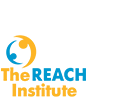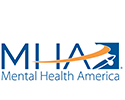Financial Toxicity Across the Cancer Care Continuum
Financial toxicity describes the problems cancer patients experience related to the cost of treatment. Medical financial hardship is increasingly common with many cancer patients due to the difficulty of paying medical bills, high level of financial distress and need to delay or forgo care altogether because of cost. The economic burden is highest for patients in the first 12 months after diagnosis and at end of life or last 12 months before death. Additionally, out-of-pocket costs are generally higher for younger patients and patients diagnosed with later stage disease.1
Financial Toxicity Impacts Patients Throughout Their Care Journey
Spending on cancer care has increased in recent years due in part to targeted therapies, immunotherapies, advanced imaging, supportive care, longer treatment durations and more treatment combinations.2 Multidisciplinary cancer care often includes surgery, radiation therapy, systemic therapy and in some cases, clinical trials.
Surgery
Half of surgical patients report either financial strain or unaffordable care, especially surgical patients with a family income between 50 and 150% of the Federal Poverty Level. Surgical patients may have unmet medical needs, choose to alter their medications and delay or defer care due to cost. Financial toxicity may lead to worse post-operative outcomes, especially for patients with complications driven by cost-reducing behaviors such as medication non-adherence or not showing up for post-operative appointments.
Radiation Therapy
Radiation therapy is an important and routinely used modality to treat cancer. Forty percent of patients faced financial distress as a result of radiation treatment alone or as part of a multimodal treatment regimen, and 10% of patients had a loss or decrease in income as an indirect consequence.3 In another study, 22% of patients experienced financial toxicity related to radiation treatment. They attributed financial distress to the loss of their job, reduced income and/or difficulty paying their rent/mortgage, transportation and food.4
Systemic Therapy
Patients receiving systemic therapy are more likely to experience financial toxicity than patients receiving only radiation therapy or surgery due to the greater duration of therapy and the high cost of cancer drugs. There are more individuals with larger out-of-pocket expenditures based on their insurance plan. Since 2016, the number of US workers covered by high deductible insurance plans, defined as out-of-pocket costs greater than $1,000, increased by 50%. Compared to a decade ago, cancer patients are receiving increasingly expensive chemotherapy and biologics, both alone and in combination. For example, oral cancer drug-based treatment regimens, covered under patients’ pharmacy benefits and including expensive specialty drugs, have the highest tier cost sharing.5
Clinical Trials
Clinical trials are vital to the development of novel therapies for patients with cancer, yet less than 7% of eligible patients take part. Elderly, uninsured and minority patients, all of whom have limited financial resources, are underrepresented in cancer clinical trials. Although the Affordable Care Act requires coverage of routine costs for patients taking part in clinical trials, patients experience additional financial burden due to the costs of frequent clinical visits, added tests, distant travel and loss of income due to missed work. Many clinical trial participants have costs associated with their insurance, deductible, co-insurance, added travel, meals, lodging and other incidental expenses.6
Impacts of Financial Toxicity
In the US, approximately 17 million people are cancer survivors, many of whom have lasting adverse effects of their disease and associated cancer treatment. Compared with individuals without a history of cancer, cancer survivors are at a greater risk for new cancers, disease progression, chronic conditions, out-of-pocket health care expenditures and work limitations. Thirty percent of adult cancer survivors report medical financial hardship as measured by an inability to afford health care services or delaying or forgoing medical care because of cost during the previous 12 months.7 These results amplify the need for providers, hospitals, health systems and policy makers to implement solutions that will protect cancer patients from financial harm.
Additionally, cancer patients are too afraid or overwhelmed to ask for financial help and are hesitant to raise financial concerns. It is important to build patient trust and ensure that the purpose of financial hardship screening is to help patients receive the best care and not to ration care or provide unequal care based on the ability to pay.8 Financial toxicity has been linked with several clinically relevant patient outcomes, including health-related quality of life, symptom burden, compliance and survival.9 Given the important relationship between financial toxicity and poor outcomes, all cancer patients will benefit from early and continuing assessment of financial distress and access to interventions that will reduce financial burden.
Diagnosing Financial Toxicity
Several validated screening tools are available to assess patients’ financial toxicity. Financial distress assessment can be done using the Comprehensive Score for Financial Toxicity (COST) patient reported outcome survey. COST proved reliability and validity in measuring financial toxicity in a study including 233 patients with advanced disease who had been receiving chemotherapy for at least 2 months. Patients with worse financial toxicity were correlated with higher psychological distress, lower income and lower quality of life.10
The National Comprehensive Cancer Network (NCCN) Guidelines for Distress Management recommends the use of the NCCN Distress Thermometer where patients circle a number from 0 to 10 that best describes how much distress they have been experiencing in the past week. While the NCCN Distress Thermometer is not specific to financial concerns, there is a problem list under Practical Concerns, which includes elements that could affect financial hardship such as finances, housing, insurance, transportation and childcare. Patients are asked to mark all that apply for items where they have had concerns in the past week.
While validated tools to measure patients’ financial distress exist, they are not uniformly adopted. Thirty seven percent of the National Cancer Institute (NCI)-designated Comprehensive Cancer Centers could not estimate the number of their patients who experienced cancer-related financial hardship, and 50% of the centers reported that patients were reluctant to ask for financial help when they needed it. Most NCI-designated Comprehensive Cancer Centers offer a range of financial services. However, 40% of the centers reported a lack of staff awareness about available financial services, and 46% reported that the pathways or workflows to connect cancer patients with existing financial services were unclear. In a study of NCCN member institutions, 76% of the responding centers screened patients routinely for financial distress, 18% screened occasionally and 6% did not screen at all. Social workers or financial counselors most often performed the financial distress screening, and 19% used a dedicated questionnaire. In those hospitals and health systems where financial distress screening was deployed, patients who screened positive for financial distress received help with drug costs, meal or gas vouchers, payment plans and charity care.11
Additionally, the American Association of Community Cancer Centers (ACCC) set up Financial Advocacy Service Guidelines that recommend screening and monitoring patients on a regular basis for risk of developing financial toxicity.12 Without philanthropic support, community-based cancer centers may lack the resources to implement patient distress screening and its associated workflows.
Reducing or Eliminating Financial Toxicity
To reduce patients’ financial distress, some providers are using technology integrated with patients’ Electronic Health Record (EHR) and collaborating with non-profit foundations. These financial assistance programs include proactive financial distress screening, patient- and provider-activated referrals, resource connection points and pharmaceutical, insurance and community/foundation resources. These programs help to reduce limitations associated with insufficient staff resources, challenges in showing patients’ unmet health-related and social needs, inadequate infrastructure to track resource availability and referrals, and inadequate foundation and community funding.13 Patients experiencing financial distress suggest that providers simplify the patient financial assistance process, provide individualized support and be more proactive by intervening earlier.14
ABOUT AUTHOR
Patricia Falconer, Strategic Advisor, Atlas Health
Email: patricia.falconer@atlas.health
With three decades of experience leading cancer services, Patricia Falconer, MBA has an unfaltering belief in what is possible. In her current consulting role as President, Health Options LLC, Patricia partners with hospitals, health systems, and medical group leaders and charitable organizations to increase access and reduce disparities in cancer care by eliminating financial barriers. As Executive Director, Cancer Care Programs, Cancer Network, and Strategic Initiatives for Stanford Health Care, Patricia transformed cancer services into an integrated network doubling the size of the service line while achieving top decile performance for patient experience and employee engagement. Patricia launched psychosocial distress screening and comprehensive cancer support services to provide holistic care. She co-authored four publications, most notably, “Distress Screening through PROMIS at an academic cancer center and network site”. Prior to March 2015, Patricia provided practice management consulting services to community-based cancer centers. She has served on the National Comprehensive Cancer Network (NCCN) Board of Directors, Cancer Support Community SF Bay Area as Vice Chair, Board of Directors, Pink Ribbon Girls Bay Area Advisory Board and the American Society of Clinical Oncology (ASCO) Consultancy Board. Patricia has a BA in Physiology with Highest Honors from U.C. Berkeley and an MBA with Honors from Santa Clara University.
ABOUT ATLAS HEALTH
Atlas Health automates philanthropic aid to improve access, affordability, outcomes and health equity for vulnerable populations. Through intelligent matching and enrollment to 20,000 philanthropic aid programs, health care organizations can improve patient outcomes and reputation, increase cash and reduce staff administrative burden. Learn more at Atlas.Health.
REFERENCES
- Annual Report to the Nation on Status of Cancer, Part 2: Patient Economic burden associated with Cancer Care K. Robin Yabroff PhD et al JNCI J Natl Cancer Inst 2021 https://doi.org/10.1093/jnci/djab192
- Annual Report to the Nation on Status of Cancer, Part 2: Patient Economic burden associated with Cancer Care K. Robin Yabroff PhD et al JNCI J Natl Cancer Inst 2021 https://doi.org/10.1093/jnci/djab192
- Financial Toxicity: A side effect of Radiation Therapy for Cancer? Tjash T. Patel, MBA, Joshua D Palmer, MD et al https://digitalcommons.pcom.edu/cgi/viewcontent.cgi?article=1276&context=research_day&httpsredir=1&referer=
- Patients undergoing Radiation Therapy are at risk of Financial Toxicity: A patient based prospective survey study Joshua D Palmer, MD, Tajesh T. Patel MD et al https://doi.org/10.1016/j.ijrobp.2015.03.014
- NIH National Cancer Institute Financial Toxicity and Cancer Treatment
- Recognizing the Financial Burden of Cancer Patients in Clinical Trials Ryan D. Nipp, Elizabeth Powell, et al The Oncologist 2015:20:572-575
- Financial Toxicity Can Be Deadly for Patients with Cancer https://www.valuebasedcancer.com/issues/2020/december-2020-vol-11-no-6/2841-financial-toxicity-can-be-deadly-for-patients-with-cancer
- NCCN Patient Advocacy Summit: Delivering Value for Patients Across the Oncology Ecosystem JCCN.org volume 18 Issue 9 September 2020
- Financial insolvency as a risk factor for early mortality among patients with cancer Ramsey SD, Bansal A, Fedorenko et al J Clin Oncology 2016;34:980-986
- Financial Hardship During Cancer Treatment NIH, National Cancer Institute https://cancercontrol.gov/reserachemphasis/supplement/financial-hardship
- Current Practices for screening and management of Financial Distress at NCCN Member Institutions Nadita KharaMD, MPH, Jessica Sugalski MPPA et al J Nat Comp Care Netw 2020:18(7) doi 10.6004/jnccn.2020.7538
- Association of Community Cancer Centers Financial Advocacy Network, Financial Services Guidelines ACCCcancer.org
- https://doi.org/10.1200?OP.21
- https://lnkd.in/gSmyTsi3


















